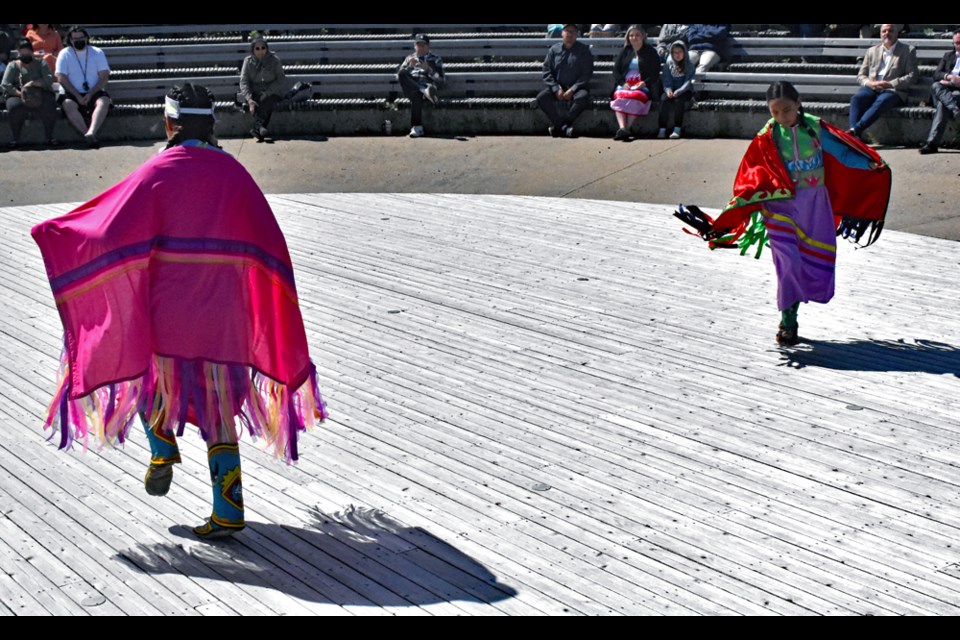WANUSKEWIN — Seven and eighth-grade students from Wâhkôhtowin and Chief Whitecap schools celebrated the Pre-Contact Literacy and Art Project with traditional songs, dances and listening to several stories on Thursday at the Wanuskewin Heritage Park.
To the beat of the drum, several students performed Indigenous dances such as fancy shawl, hoop and jingle accompanied by traditional singers, while others read the stories they had written to the crowd gathered at the amphitheatre.
The Brownlee Family Foundation led the project, which hopes to promote and teach students of the Northern Plains Indigenous heritage, and it was done in co-operation with the Saskatoon Public Schools and the Wanuskewin Heritage Park.
Wâhkôhtowin School has a Nêhiyâwiwin Cree Language and Culture program while Chief Whitecap School has the Dakota Language program, both of which teach students the history, culture and language of the Indigenous Peoples of Saskatchewan.
Wayne Brownlee said the project was developed after learning more about the history and culture of the Indigenous Peoples, which is different from how they were depicted in movies and television shows.
“It is clear that history is said on who writes it and what happened. There is more to know about Indigenous Peoples, not only about cowboys and Indians in shows where most did not happen. When I met Dr. Ernie Walker, my eyes were opened,” said Brownlee.
Walker is a professor emeritus of archaeology and anthropology at the University of Saskatchewan. He is also a founding board member of Wanuskewin Heritage Park where he leads in the unearthing of treasures of the past in Canada’s longest-running archaeological dig.
“Let us try and get rid of the misconceptions and tell the stories of Plains Cree people factually correct. Let us go back in time, use our imagination of what may have happened and come up with stories with their view,” added Brownlee.
Wâhkôhtowin School Nêhiyâwiwin Cree Language and Culture program teacher Trevor Iron said it is important for the students to learn about the history and culture of the Plains Cree peoples that inhabited these lands.
“For the kids, just to get them motivated and thinking of how life was before contact with European settlers. It was a big learning experience for many of them. It is pretty amazing for them to have their artwork displayed in an art gallery of this scale. It is a great way of acknowledging the commitment that they made for this project,” said Iron.
Honey Constant, Wanuskewin park’s Visitor Services coordinator, said they are looking to have more seven and eight-graders be involved with the project with the help of the SPS and its Deputy Director of Education Brent Hills.
“This is the first time it’s done a full program. They’ve tried it in before but COVID ended up cancelling it halfway through. We started in October and the program finished [Thursday]. So, this is the first year that we’ve completed it. [Hills] he was the one who picked out the schools, but hopefully, in the future, we will have more classes here,” said Constant.
“This is the pilot year since we completed the entire program. We’re hoping that, as interest in the program grows, we can get different funding that we can access so we can continue to do this every year.”
The Pre-Contact Literacy and Art Project is a student-led program aims to change the image of some stereotypes given to Indigenous Peoples and reclaim the heritage of the Northern Plains Cree people. It gives students a seasonal approach to learning. through art and literacy where they learn the history of Indigenous Peoples before European contact was made.




